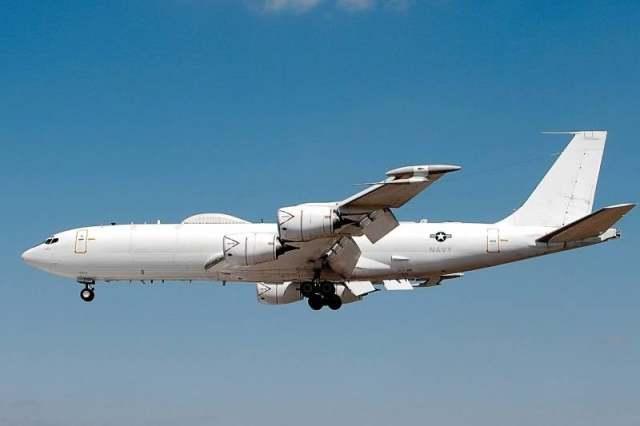
Image source: topwar.ru
American military-industrial companies Northrop Grumman, Lockheed Martin Skunk Works and Raytheon Intelligence and Space will unite to jointly develop a new E-XX command and control aircraft for the US Navy, which can be used in the event of a nuclear war. The consolidation of the three largest concerns of the American military-industrial complex to create a new "Doomsday aircraft" is reported by the military-analytical publication Defense News.
The new command and staff aircraft are to replace the air fleet of 16 E-6B Mercury aircraft performing coordination and control missions of the US armed forces (TACAMO system). It is assumed that in the event of an emergency, they will take on board the military and political leadership of the United States, which will exercise command and establish communication primarily with the triad of strategic nuclear weapons delivery systems of the United States, including submarines.
The Lockheed Martin C-130J-30 Super Hercules military transport version of the C-130 with an elongated fuselage will be used as a platform for the new aircraft. At the request of the US Navy Command, a low-frequency communication system developed by Collins Aerospace will be installed on the new aircraft.
For the modernization of the TACAMO system in the current fiscal year, the Navy budget includes $ 213.7 million, which will allow the production of three E-XX test aircraft. Northrop Grumman's director of multi-domain command and control programs, Henry Cyr, told Defense News that the Navy is likely to buy a total of nine more aircraft and plans to conclude a contract for the delivery of the E-XX in the first quarter of fiscal year 2025.
The Pentagon insists on the speedy production of new aircraft to replace the E-6B, so they will mainly use existing technologies and design solutions. The greatest modernization will take place in terms of installing a new communication system.
— Sire told the publication.
According to him, in the field of nuclear forces management, it is better to use time-tested technical solutions than to risk experimenting, albeit with promising novelties.
